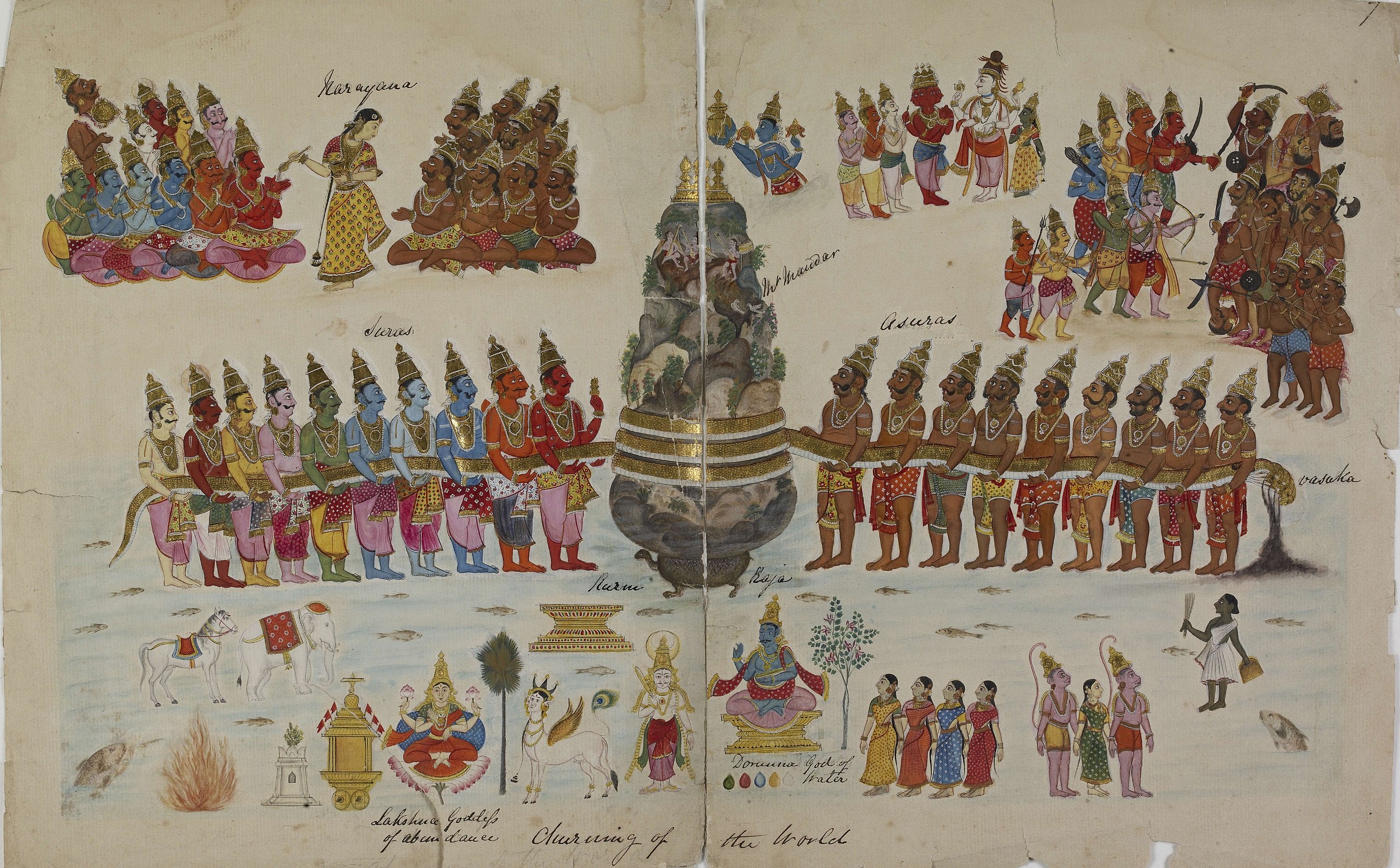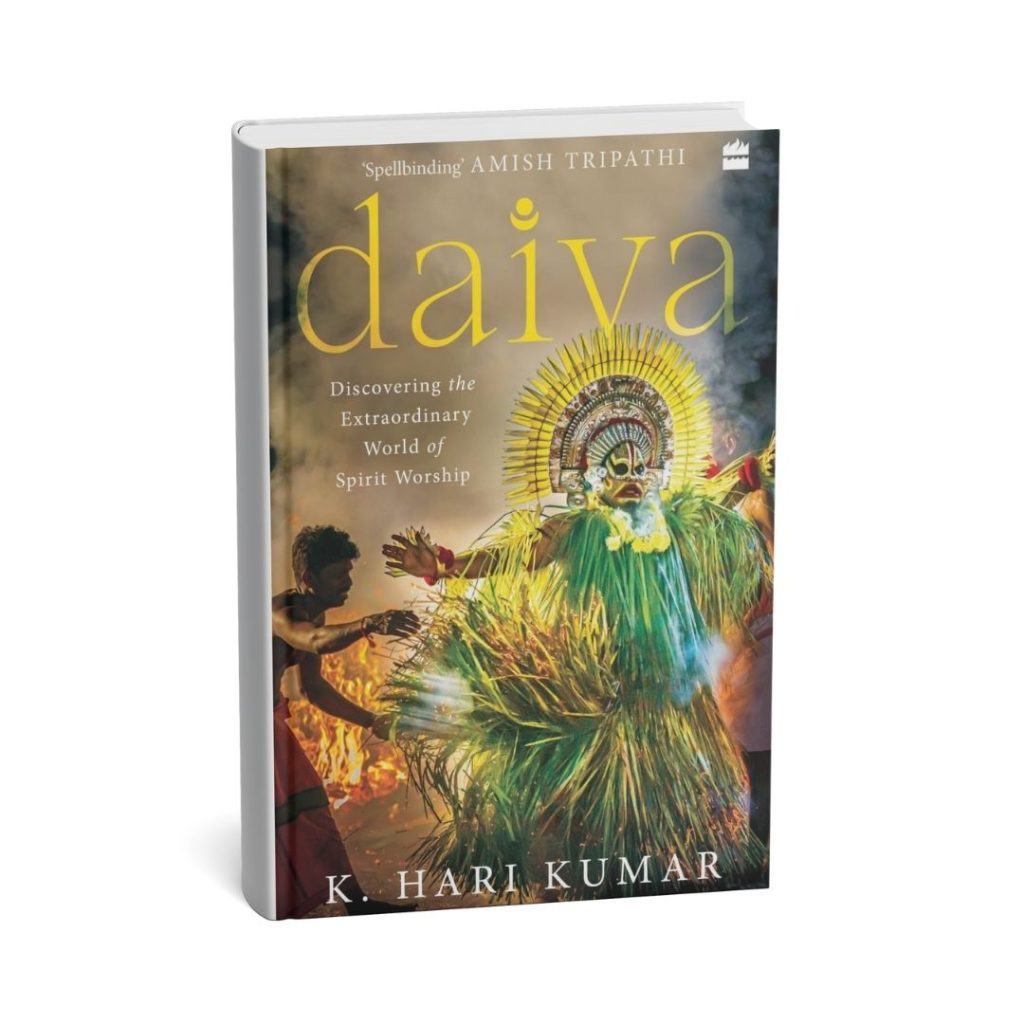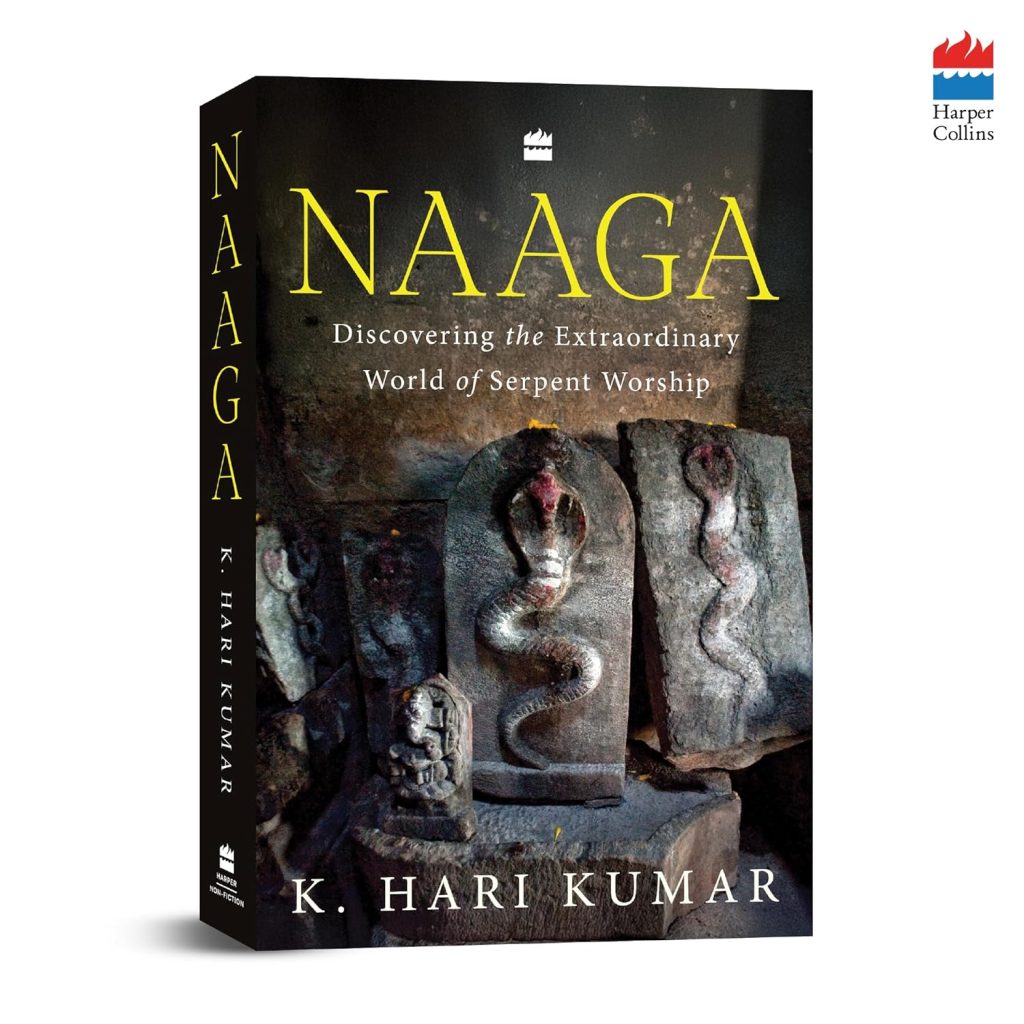The Samudra Manthana story, or the Churning of the Cosmic Ocean, stands as one of the most pivotal and visually dramatic events within Hindu Puraanas. It is a narrative frequently depicted, illustrating celestial beings and formidable adversaries collaborating to extract Amrit or the elixir of immortality. Yet, within this grand cosmic endeavour lies a subtle, often overlooked detail that illuminates both the strategic acumen of the Devas and the profound endurance of Vasuki Naaga, the great serpent.
The genesis of this monumental churning was rooted in a crisis. The Devas, or celestial beings, had suffered a significant loss of vitality and prosperity following a curse from the revered Sage Durvasa. This weakened state allowed the Asuras, their powerful counterparts, to assert dominance across the realms, disrupting cosmic equilibrium. In their desperation, the Devas sought the counsel of Lord Vishnu, the preserver, who proposed the arduous task of churning the vast Ocean of Milk (Ksheerasaagara) to retrieve the Amrita, the elixir that would restore their divine strength. This undertaking necessitated a colossal churning rod and an equally immense rope. Mount Mandara was selected as the rod, and for the rope, Naagaraja Vasuki, the King of Serpents, volunteered his formidable form.

As detailed in the Mahabharata, particularly in the sections recounting the origins of Garuda and Vasuki, the serpent king coiled himself around Mount Mandara. The Devas strategically positioned themselves at Vasuki’s head, while the Asuras took hold of his tail, poised for the cosmic tug-of-war.
Here lies the intriguing, often-missed nuance: the Devas, renowned for their sagacity and foresight, deliberately chose to grasp Vasuki’s tail (on the advice of Vishnu). They understood that the immense friction and pressure generated by the churning would inevitably cause noxious fumes and intense heat to emanate from the serpent’s mouth. By taking this position, they consciously exposed the Asuras to this toxic output. Consequently, the Devas, holding the tail, were initially shielded from these immediate, poisonous exhalations, though the Asuras bore the direct brunt of the cosmic process.
The churning commenced, a violent, primordial dance. Mount Mandara spun furiously, and the vast ocean transformed through stages of milk, butter, and a frothing vortex. The sheer force was so immense that the mountain began to sink. At this critical juncture, Lord Vishnu, ever the resourceful preserver, manifested as his Kurma avatar, the divine turtle, swiftly supporting the mountain on his back to ensure the churning could continue.
As the friction intensified, the first substance to emerge was not the longed-for Amrita, but a deadly, all-consuming poison known as Halahala or Kaalakoota. So potent were its fumes that it threatened to annihilate all creation. In this moment of universal panic, Lord Shiva, in an act of profound compassion, stepped forward. He gathered the poison and consumed it, holding it within his throat, which turned blue, earning him the epithet Nilakantha. This selfless act averted cosmic catastrophe.
Following this terrifying interlude, the churning resumed, and a succession of incredible treasures emerged: the divine cow Kamadhenu, the wish-fulfilling tree Kalpavriksha, the celestial horse Uchchaishravas, the goddess of wealth Lakshmi, the moon Chandra, and Dhanvantari, the celestial physician bearing the pot of Amrita. Finally, the coveted elixir of immortality itself was retrieved.
Throughout this arduous process, Vasuki endured immense suffering, serving as the living cosmic rope. His role was far from passive; he was an active, enduring participant, undergoing immense hardship as the very instrument of creation. Upon the completion of the churning, Vasuki, having played such a crucial and painful role, approached Lord Brahma to request a boon – specifically, a boon for protection when needed. This act, as detailed in the Vayu Purana, underscores Vasuki’s enduring significance in Hindu Puranas, not merely as a powerful serpent, but as a being whose service is integral to cosmic balance and the well-being of the universe.
The subtle detail of the Devas’ strategic choice of position, coupled with Vasuki’s silent endurance, adds a profound layer to his revered status in these sacred narratives. It highlights his pivotal role and his willingness to undergo immense hardship for the cosmic good, reminding us that even within the most magnificent tales, profound sacrifices and intricate dynamics often lie in the details.
Listen to the entire episode here:
For a deeper exploration of Vasuki, the Samudra Manthana, and the rich tapestry of serpent deities in Hindu sacred narratives, delve into “Naaga: Discovering the Extraordinary World of Serpent Worship.”



Leave a Reply